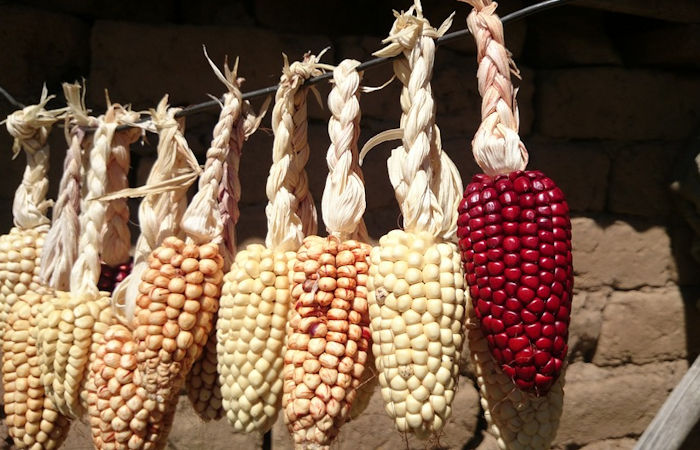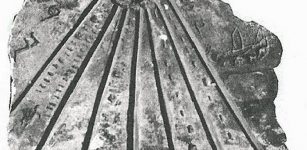Agriculture In North America Led To Changes In Age-Independent Mortality
Jan Bartek - AncientPages.com - The transition to agriculture from hunting and gathering in pre-colonial North America led to changes in age-independent mortality, or mortality caused by factors that are not associated with age, according to a new study by a Penn State-led research team.
The team found that the intensification of crop use occurred in two phases, the first of which led to a decline in human age-independent mortality, while the second is associated with a rise in it. The study is the first to tie patterns of age-independent mortality to food production.
The intensification of agriculture by Native Americans long before Europeans arrived in North America led to changes in age-independent mortality (mortality that is not associated with age), according to a new study by a Penn State-led research team. Credit: depuravida/ Pixabay
"This study tells the story of our shared human experience," said George Milner, distinguished professor of anthropology at Penn State and lead author. "We have several examples around the world where we see a move toward crop domestication as an independent event—eastern North America, particularly the midcontinent, being one of them, but so too the Fertile Crescent in the Middle East. Also, there are demographic changes happening. This paper addresses the relationship between the move toward agriculture and demographic change."
The researchers examined previously published data to identify general trends in archaeobotanical samples, or the remains of plants in the archaeological record, and skeletal samples from sites across eight states stretching from Illinois to northern Alabama. They wanted to study the relationship between the domestication of crops and an index that uses skeletal data to capture the frequency of juveniles aged five to 19 years old relative to all individuals aged five or more. Anthropologists normally use the index to measure fertility rates and population growth, but the new work shows it is more responsive to age-independent mortality.
Mortality models, including those for pre-industrial societies, contain three components: juvenile mortality, which declines as children get older; adult mortality, where the probability of dying increases with advancing age; and age-independent mortality, an equal probability of dying for members of all age groups, which might occur in extreme events like food shortages, epidemics or warfare.
The researchers studied the archaeobotanical data to identify where the record showed an increase in the consumption of domesticated crops compared to foraged foods like nuts. They also examined skeletal data to identify decreases or increases in the indicator of age-independent mortality. The index focuses on individuals between five and 19 years old because in human populations that age range is characterized by low mortality relative to other age groups. Increases in mortality for this age group would indicate the occurrence of events like famines or conflict.
The researchers identified a strong correlation between crop domestication and changing age-independent mortality rates. Crop domestication happened in two stages in pre-colonial North America, with a decrease in age-independent mortality noted during the first stage of crop domestication and a rise during the second stage. The researchers reported their findings in the Proceedings of the National Academy of Sciences.
"What we've found is the index that has traditionally been interpreted as a fertility and population growth indicator is more tightly correlated to age-independent mortality, which reflects the number of deaths in the part of the age distribution where very few people die," said Milner. "This means that the pattern of first adoption of agriculture, seen elsewhere in the world and observed in eastern North America as well, coincides with lower age-independent mortality. Basically, it's good times, and that's what we see culturally."
The first stage of agricultural intensification in North America, which includes the cultivation of plants such as squash, sunflower and other native plants, occurred approximately 2,000 years ago during the Middle Woodland period up to about A.D. 500, said Milner. Indigenous societies flourished during this time. They established long-distance exchange networks, had an incredibly rich ceremonial life, and constructed big mounds and earthwork complexes.
The archaeological record shows that in the centuries just before A.D. 1000, and from that time onward, there was an increase in warfare. During this time Indigenous societies began cultivating maize and beans, and a number of new cultural changes occurred, including the initial development of powerful chiefdom societies. Age-independent mortality increased during this period, presumably due to conflict and the spread of diseases from higher numbers of individuals living near one another.
"The overall pattern seen in the demographic picture of North American pre-European contact is similar to other datasets from around the world," Milner said. "The entire story makes perfect sense in terms of agricultural productivity, demographic change and cultural developments, including change over time in conflict and sociopolitical systems."
The study links, for the first time, a worldwide pattern to age-independent mortality and agricultural developments, according to Milner.
See also: More Archaeology News
"It's a convenient measure of what people were eating, but also other aspects of society," he said. "You cannot adopt a new technology without changing other aspects of society, such as the distribution of people and communities across a landscape. This agricultural measure is a signal of other changes in society that we can measure or observe archaeologically. It's really a bigger story about our shared human experience. What we've found here in North America parallels the experiences of people elsewhere around the world and reinforces the fact that we're all in this together, no matter our backgrounds."
The study was published in the journal Proceedings of the National Academy of Sciences
Written by Jan Bartek - AncientPages.com Staff Writer





















